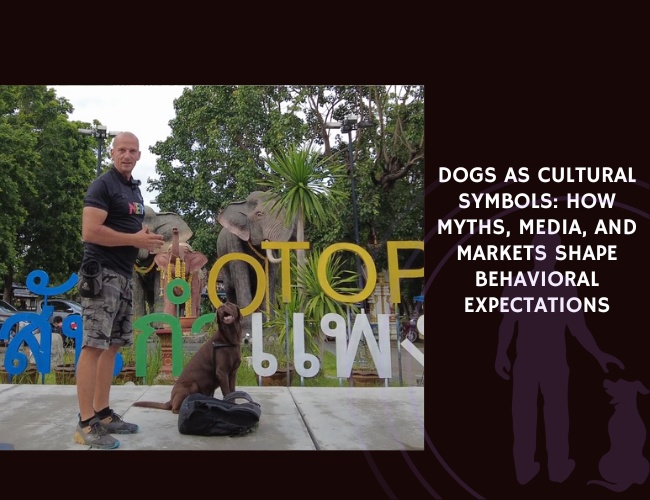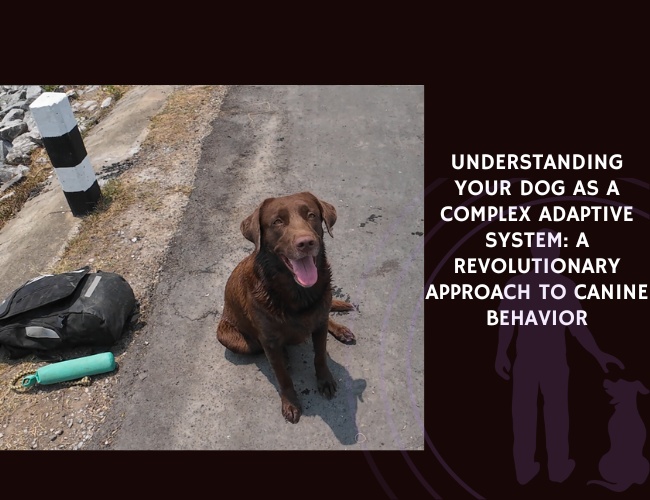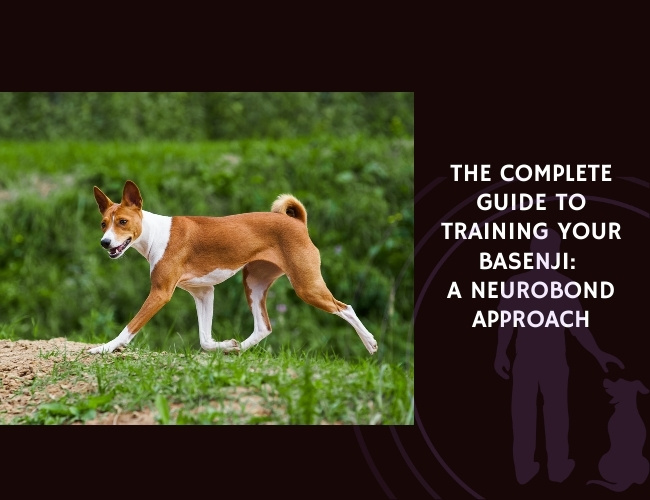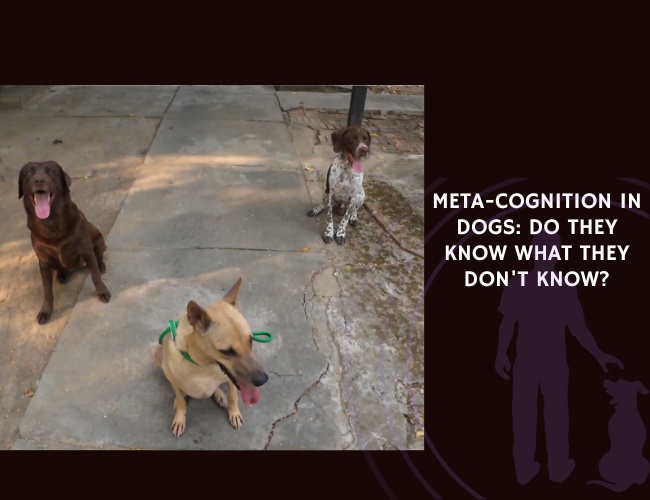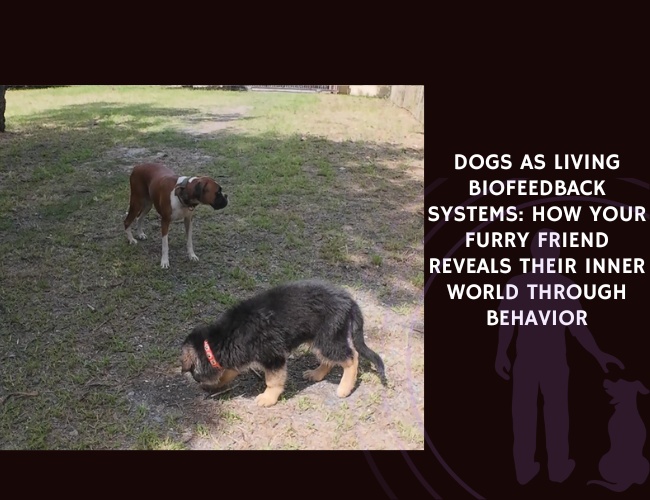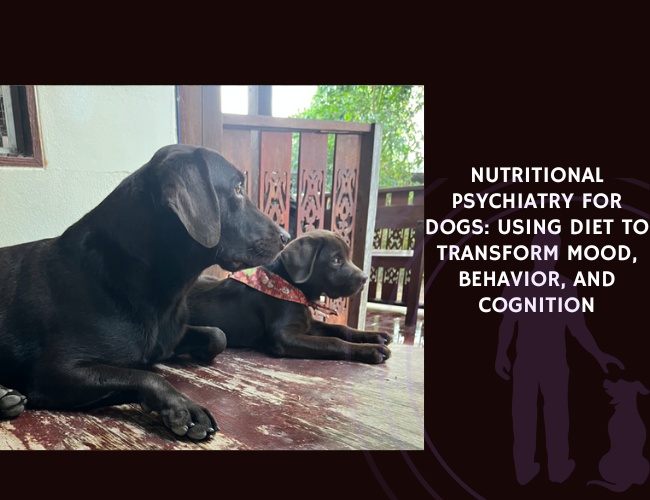Introduction: Understanding Our Complex Relationship with Dogs
Have you ever wondered why you expect your Golden Retriever to be naturally gentle with children, or why you assume a German Shepherd will instinctively protect your home? These expectations don’t arise in a vacuum—they’re woven from centuries of cultural narratives, reinforced by Hollywood portrayals, and amplified by a multi-billion dollar pet industry that shapes how we perceive our furry companions.
The relationship between humans and dogs spans over 15,000 years, yet our modern understanding of canine behavior is increasingly filtered through cultural lenses rather than biological realities. This fascinating intersection of myth, media, and market forces creates a complex web of expectations that profoundly impacts both dog welfare and the human-animal bond. As we explore this intricate landscape, you’ll discover how these cultural forces shape not just what we expect from our dogs, but how we interpret their every tail wag, bark, and behavioral quirk.
Let us guide you through this eye-opening journey into the symbolic world of dogs, where ancient myths meet Instagram influencers, and where marketing campaigns can determine which breeds end up in shelters. Understanding these dynamics isn’t just academically interesting—it’s essential for anyone who shares their life with a canine companion or works in animal welfare. 🐾
Myth and Symbolism: The Ancient Stories That Shape Modern Expectations
Historical Foundations of Canine Symbolism
The stories we tell about dogs have deep roots that stretch back to humanity’s earliest civilizations. You might notice how certain narratives about dogs appear consistently across cultures—the loyal guardian, the faithful companion, the bridge between worlds. These aren’t just quaint folklore; they’re powerful cultural blueprints that continue to shape how you interact with your dog today.
Ancient civilizations crafted diverse symbolic roles for dogs:
- Egyptian mythology portrayed Anubis, the jackal-headed god, as a guide to the afterlife
- Greek myths featured Cerberus, the three-headed guardian of the underworld
- Norse legends spoke of Garmr, the blood-stained watchdog of Hel
- Native American traditions often cast dogs as spiritual intermediaries
Did you know that the phrase “man’s best friend” wasn’t just a casual observation but a legal argument? In 1870, lawyer George Graham Vest used this now-iconic phrase in a courtroom speech, crystallizing centuries of cultural sentiment into a defining characteristic that still influences how we perceive dogs today. This single phrase has arguably done more to shape Western dog-human relationships than any scientific study on canine behavior.
How Cultural Narratives Create Behavioral Stereotypes
These mythological and historical roles don’t just live in storybooks—they actively shape your expectations of modern dog behavior. When you bring home a Labrador Retriever, you’re not just adopting a dog; you’re inheriting centuries of cultural baggage about what this breed “should” be like. The retriever’s historical role as a fisherman’s helper in Newfoundland has morphed into expectations of unwavering friendliness, water-loving enthusiasm, and infinite patience with children.
Common behavioral stereotypes rooted in cultural myths include:
- Border Collies must be intensely focused workaholics
- Pit Bulls are either dangerous fighters or misunderstood angels (with little middle ground)
- Toy breeds are decorative lap warmers rather than “real” dogs
- Huskies are wild, wolf-like creatures barely removed from their ancestors
You might recognize these stereotypes in your own thinking, even if you intellectually understand that individual dogs vary tremendously. This is the power of cultural narrative—it operates below conscious awareness, coloring our perceptions before we even realize it’s happening. When your normally calm Collie doesn’t herd your children or your Chihuahua displays fierce independence rather than clingy dependence, you might feel confused or even betrayed by these departures from the cultural script.
The Persistence of Symbolic Roles in Modern Society
What’s particularly fascinating is how these ancient symbolic roles persist and evolve in contemporary contexts. The guardian dog of mythology has transformed into the modern security system on four legs. The hunting companion has become the weekend hiking buddy. The spiritual guide has morphed into the emotional support animal. These transformations reveal how we continuously adapt old symbols to meet new needs, but the underlying expectations remain remarkably consistent.
Consider how different cultures maintain distinct symbolic relationships with dogs. In many Western societies, dogs have achieved near-human family member status, complete with birthday parties and inheritance rights. Meanwhile, in some Asian and African contexts, dogs might simultaneously be valued working animals and potential food sources—a duality that challenges Western sensibilities. These varying perspectives remind us that our symbolic understanding of dogs isn’t universal truth but culturally constructed meaning. 🧠
Media Representations: When Hollywood Meets Your Living Room
The Power of the Silver Screen
Every time you watch a dog movie, you’re not just being entertained—you’re absorbing powerful messages about how dogs should behave, what they should mean to us, and what we should expect from them. Films like “Lassie,” “Marley & Me,” and “A Dog’s Purpose” don’t just tell stories; they create behavioral templates that influence millions of dog owners worldwide.
Media consistently celebrates specific canine traits:
- Unconditional loyalty that transcends logic or self-preservation
- Intuitive understanding of human emotions and needs
- Heroic problem-solving abilities
- Instant bonding with “the right” humans
- Redemptive power to heal human emotional wounds
The Lassie effect is particularly noteworthy—this single character has convinced generations that Collies possess near-telepathic abilities to understand complex situations and communicate elaborate messages through barking. You’ve probably heard someone joke about their dog “pulling a Lassie” when alerting them to something unusual. This cultural shorthand demonstrates how deeply media representations penetrate our collective consciousness.
Social Media and the Influencer Pet Phenomenon
The rise of social media has intensified and democratized the creation of dog symbolism. Instagram-famous dogs with millions of followers present curated versions of canine life that make your average pet seem disappointingly ordinary. These “influencer pets” showcase lives of constant adventure, perfect obedience, fashionable outfits, and photogenic expressions that seem to convey human-like emotions.
The social media effect on dog expectations includes:
- Pressure to have a “camera-ready” pet at all times
- Belief that dogs should enjoy dress-up and constant photography
- Expectation of trick-performing abilities as standard behavior
- Assumption that separation anxiety or destructive behaviors indicate failure
When you scroll through perfectly staged photos of dogs “smiling” at sunset beaches or performing complex tricks, it’s easy to forget that behind each post might be hours of training, multiple takes, or even digital enhancement. This constant exposure to idealized dog behavior creates what researchers call the “Instagram versus reality” gap—a disconnect between what we see online and what we experience at home.
Advertising’s Role in Shaping Behavioral Ideals
Beyond entertainment media, advertising plays a crucial role in defining acceptable dog behavior. Notice how dog food commercials invariably feature energetic, glossy-coated dogs eagerly consuming their meals, playing fetch with laughing families, or gazing adoringly at their owners. These images aren’t selling just products; they’re selling behavioral ideals.
The advertising industry has masterfully linked specific behaviors with product consumption. Does your dog lack energy? There’s a food for that. Is your pet anxious? Here’s a calming supplement. Not bonding properly? Try this special treat. This creates a feedback loop where normal behavioral variation becomes pathologized, requiring commercial intervention to achieve the advertised ideal. You might find yourself questioning whether your dog’s calm temperament indicates depression or if their food preferences suggest you’re failing as an owner. 😄

Market Forces: The Commodification of Canine Behavior
The Designer Dog Revolution
The pet industry’s transformation of dog breeding represents one of the most visible examples of market forces shaping behavioral expectations. The rise of “designer dogs”—intentional crossbreeds like Labradoodles, Goldendoodles, and Puggles—illustrates how market demand can literally reshape the canine genome in pursuit of idealized temperaments.
Market-driven breeding trends promote specific promises:
- “Hypoallergenic” coats that won’t trigger allergies (often misleading)
- Perfect blend of parent breed temperaments (genetically unpredictable)
- Enhanced health through “hybrid vigor” (limited scientific support)
- Family-friendly dispositions suitable for first-time owners (oversimplified)
You might have noticed how these designer breeds often come with elaborate behavioral marketing. A Schnoodle isn’t just a Schnauzer-Poodle mix; it’s marketed as combining the Schnauzer’s protective instincts with the Poodle’s intelligence and hypoallergenic coat. This reductive arithmetic of temperament (protective + smart = perfect family dog) ignores the complex reality of genetic inheritance and individual variation.
Training Markets and the Obedience Industrial Complex
The dog training industry has evolved into a multi-billion dollar market that both responds to and creates behavioral expectations. From puppy kindergarten to advanced agility courses, from board-and-train facilities to online certification programs, the training market suggests that natural dog behavior requires professional intervention to be acceptable.
The training industry reinforces several key messages:
- Untrained dogs are incomplete or problematic
- Professional intervention is necessary for proper behavior
- Standardized commands and responses define “good” dogs
- Behavioral issues reflect owner failure requiring expert correction
This commercialization of training has created what some critics call the “obedience industrial complex”—a system where normal canine behaviors like barking, digging, or chasing are reframed as problems requiring paid solutions. You’ve probably felt pressure to enroll your perfectly pleasant dog in training classes, not because of specific issues, but because it’s become an expected part of responsible ownership.
Product Marketing and Behavioral Modification
Walk through any pet store, and you’ll encounter hundreds of products promising to modify, enhance, or correct your dog’s behavior. Each product carries implicit messages about what constitutes normal versus problematic behavior. Anti-bark collars suggest that vocalization is inherently negative. Puzzle feeders imply that standard eating is insufficiently stimulating. Anxiety vests indicate that stress is abnormal rather than situational.
The sophistication of behavioral product marketing has reached remarkable levels. Smart collars track your dog’s activity levels against breed averages, creating anxiety about whether your pet is sufficiently exercised. Interactive cameras let you monitor and correct behavior remotely, suggesting constant surveillance is necessary for proper training. DNA tests promise to decode your dog’s behavioral tendencies through genetic analysis, reducing complex personalities to percentage breakdowns. This technological approach to behavior management reflects and reinforces cultural anxieties about control and predictability in our relationships with dogs. 🧡
Behavioral Consequences: When Expectations Meet Reality
The Welfare Impact of Mismatched Expectations
When cultural expectations clash with biological reality, the consequences for dog welfare can be severe. You might expect your Border Collie to be content with a daily walk around the block, based on apartment-dwelling Instagram Collies, only to find yourself dealing with a frustrated dog exhibiting destructive behaviors. This mismatch between expectation and reality doesn’t just stress owners—it can profoundly impact canine mental and physical health.
Common welfare issues arising from cultural mismatches include:
- Chronic stress from insufficient mental stimulation
- Anxiety disorders from overwhelming social expectations
- Physical health problems from inappropriate exercise regimes
- Behavioral deterioration from suppression of natural instincts
Research in behavioral science reveals that forcing dogs into culturally defined roles can trigger a cascade of welfare problems. The brachycephalic (flat-faced) breeds popularized by media and celebrity culture exemplify this issue. French Bulldogs and Pugs, marketed as perfect apartment companions, often struggle with breathing difficulties, overheating, and exercise intolerance—yet their popularity continues to soar because they fit cultural ideals of cuteness and manageability.
Understanding “Problem Behaviors” Through a Cultural Lens
What we label as “problem behaviors” often represents normal canine behavior that conflicts with cultural expectations. Your terrier’s tendency to dig isn’t defiance—it’s expressing centuries of breeding for pest control. Your hound’s vocalization isn’t excessive—it’s communication style shaped by generations of hunters needing long-distance alerts. Recognizing this can transform how you approach behavioral challenges.
Reframing common “problems” as natural behaviors:
- Barking: Communication and alert system, not nuisance noise
- Chewing: Exploration and stress relief, not destruction
- Jumping: Greeting behavior and excitement, not dominance
- Resource guarding: Survival instinct, not aggression
This shift in perspective doesn’t mean accepting all behaviors without modification, but it does mean approaching training with empathy and understanding rather than frustration. When you recognize that your dog’s behavior stems from deeply embedded biological drives rather than spite or stupidity, you can work with their nature rather than against it.
The Rehoming Crisis and Cultural Expectations
The statistics are sobering: millions of dogs enter shelters annually, with behavioral issues cited as a leading cause of relinquishment. But dig deeper, and you’ll find that many of these “behavioral issues” are actually mismatches between cultural expectations and canine reality. The energetic Lab puppy purchased after watching “Marley & Me” becomes the destructive adolescent that overwhelms unprepared families.
Shelter workers report predictable patterns tied to media trends. After the release of “101 Dalmatians,” shelters saw an influx of Dalmatians—a high-energy breed requiring experienced handling. Following “Game of Thrones,” Husky-type breeds flooded rescues as owners discovered that these wolf-like dogs required more than aesthetic appreciation. This cycle of media-driven acquisition followed by reality-driven relinquishment represents a profound failure of our cultural system to prepare people for actual dog ownership. 🐾
Cross-Cultural Perspectives: A Global View of Canine Symbolism
Eastern vs. Western Symbolic Frameworks
The symbolic role of dogs varies dramatically across cultural boundaries, challenging the assumption that Western pet-keeping norms represent universal truths. In many Eastern philosophies, dogs occupy complex symbolic spaces that don’t easily map onto Western categories of “pet” or “working animal.”
Contrasting cultural perspectives on dogs:
- Japanese culture: Dogs as spiritual beings deserving respect, leading to different training philosophies emphasizing harmony over dominance
- Indian traditions: Complex religious symbolism where dogs can be both sacred (Bhairava’s companion) and ritually impure
- Middle Eastern contexts: Functional relationships focused on guarding and herding, with less emphasis on companionship
- Indigenous American: Dogs as spiritual intermediaries and practical partners in survival
You might find it challenging to understand how the same species can be simultaneously revered and relegated, eaten and elevated, depending on cultural context. Yet this diversity reveals that our own cultural assumptions about proper dog-human relationships are just one possible configuration among many.
Urban Versus Rural Behavioral Expectations
The divide between urban and rural dog-keeping practices highlights how environmental context shapes behavioral expectations. If you’re raising a dog in Manhattan, your concerns revolve around leash manners, apartment etiquette, and dog park socialization. Meanwhile, rural dog owners might prioritize livestock interaction, property patrol, and independent decision-making.
Environmental factors shaping expectations:
- Urban requirements: Tolerance of crowds, minimal barking, restricted movement, scheduled elimination
- Rural allowances: Territorial behavior, vocal communication, free-ranging exploration, working partnerships
These differing expectations create challenges when dogs move between contexts. The farm dog relocated to the city might struggle with constant leash restriction, while the urban dog moved to the country might be overwhelmed by the freedom and responsibility of rural life. Understanding these contextual differences helps explain why behavioral advice can’t be one-size-fits-all.
Globalization’s Homogenizing Effect
Digital media and globalization are creating an increasingly uniform global dog culture, primarily exported from Western, particularly American, sources. You’ve probably noticed how dog training videos from around the world increasingly feature similar techniques, terminologies, and even treat brands. This cultural convergence has both benefits and drawbacks.
The spread of positive reinforcement training methods and animal welfare awareness represents genuine progress. However, the wholesale adoption of Western pet-keeping practices can clash with local traditions, economic realities, and environmental contexts. When Instagram-inspired dog ownership ideals reach communities where dogs have traditionally served practical roles, it can create confusion about proper care and unrealistic expectations about human-animal relationships.
Globalization’s impact on dog culture includes:
- Standardization of training methods across cultures
- Spread of Western breed preferences worldwide
- Universal adoption of commercial pet products
- Erosion of traditional human-dog working relationships
This homogenization particularly affects developing nations where Western-style pet ownership becomes a status symbol, potentially displacing more sustainable and culturally appropriate relationships with dogs. 🧠
Myth. Media. Market.
Stories shape perception. From Anubis guiding souls in Egyptian lore to loyal hounds guarding medieval castles, cultural myths established enduring archetypes that still influence how we expect dogs to behave.
Screens reinforce stereotypes. Lassie, Rin Tin Tin, and countless modern pet commercials crystallize breeds into roles—gentle family guardian, brave protector, comic sidekick—creating powerful but often misleading behavioral expectations.



Commerce drives demand. The pet industry amplifies these cultural narratives, turning symbolism into sales. Marketed ideals of “perfect family dogs” fuel trends that impact breeding, adoption rates, and ultimately the welfare of real dogs behind the myths.
Training and Education: Bridging the Expectation Gap
Developing Realistic Training Approaches
Understanding the cultural forces shaping our expectations allows us to develop more realistic and humane training approaches. Rather than pursuing an impossible ideal of the “perfect” dog, you can work toward a relationship that honors both your needs and your dog’s inherent nature.
Principles for culturally aware training:
- Recognize breed tendencies without becoming enslaved to stereotypes
- Adapt training to individual personality rather than cultural scripts
- Set goals based on your actual lifestyle, not idealized media portrayals
- Accept behavioral variation as normal rather than problematic
Modern ethological research supports this individualized approach. Studies on canine cognition reveal that dogs possess distinct personalities, learning styles, and emotional capacities that can’t be reduced to breed generalizations or cultural categories. When you appreciate your dog as an individual rather than a cultural symbol, training becomes a collaborative process rather than an imposition of cultural will.
Educating Owners About Biological Realities
One of the most important interventions in improving dog welfare involves educating potential and current owners about biological realities that transcend cultural narratives. You might be surprised to learn that many behaviors you consider problematic are actually signs of a healthy, normally functioning dog.
Essential biological facts often obscured by cultural myths:
- Dogs need 12-14 hours of sleep daily, not constant interaction
- Sniffing and exploration are crucial for mental health, not time-wasting
- Play behavior includes elements that might appear aggressive to humans
- Social structures are complex and situational, not simply dominant/submissive
This education must go beyond basic care instructions to address the deeper psychological and social needs of dogs. Understanding concepts like fear periods, adolescent regression, and senior cognitive changes helps you maintain realistic expectations throughout your dog’s life stages. When behavioral changes are anticipated rather than unexpected, you’re better equipped to respond with patience and appropriate support.
Professional Guidance Without Commercial Pressure
The challenge lies in accessing professional behavioral guidance without falling prey to commercial pressures that pathologize normal behavior. Ethical trainers and behaviorists can help you distinguish between genuine behavioral concerns requiring intervention and normal variations that simply need understanding and management.
Look for professionals who emphasize understanding over obedience, who discuss behavior in context rather than absolutes, and who respect both scientific evidence and individual variation. The best trainers help you see your dog more clearly rather than imposing a standardized behavioral template. They act as interpreters between the cultural world of human expectations and the biological world of canine needs. 😄
Health Concerns: When Cultural Ideals Compromise Welfare
The Physical Cost of Aesthetic Preferences
The pursuit of culturally idealized appearances has created serious health crises in numerous dog breeds. You’ve likely noticed the increasingly extreme physical features in popular breeds—the ever-flatter faces of French Bulldogs, the sloping backs of German Shepherds, the wrinkled excess of Shar Peis. These “hypertypes” represent the physical manifestation of cultural values prioritizing appearance over function.
Health issues linked to cultural aesthetic preferences:
- Brachycephalic obstructive airway syndrome in flat-faced breeds
- Hip dysplasia exacerbated by extreme angulation in show lines
- Skin infections in excessively wrinkled breeds
- Spinal problems in breeds with elongated or shortened proportions
The tragedy is that these health problems are entirely preventable through different breeding choices, but market demand driven by cultural preferences perpetuates and even intensifies these harmful traits. When you choose a dog based primarily on appearance or cultural symbolism rather than health and temperament, you inadvertently support breeding practices that prioritize human aesthetic preferences over canine welfare.
Behavioral Health and Cultural Stress
Beyond physical health, cultural expectations can significantly impact canine psychological well-being. The pressure to be a perfect family pet, an Instagram star, or a status symbol creates chronic stress that manifests in various behavioral and health problems.
Signs of culturally induced stress in dogs:
- Compulsive behaviors like excessive licking or tail chasing
- Anxiety disorders requiring pharmaceutical intervention
- Learned helplessness from suppression of natural behaviors
- Depression from insufficient stimulation or inappropriate lifestyle
Research on canine stress reveals that dogs living in environments mismatched to their biological needs show elevated cortisol levels, compromised immune function, and shortened lifespans. The apartment-dwelling Husky, the under-stimulated Border Collie, the socially isolated pack animal—these cultural mismatches create genuine suffering that we often fail to recognize because the dogs aren’t meeting our expectations rather than us not meeting theirs.

Rethinking Health Through a Biological Lens
Shifting our perspective from cultural ideals to biological needs can revolutionize how we approach canine health. This means prioritizing function over form, behavior over appearance, and individual needs over breed stereotypes.
You might need to accept that your dog’s optimal health looks different from media portrayals. A healthy weight might appear “too thin” compared to the rounded dogs in commercials. Normal aging might include graying, reduced activity, and changing social preferences that don’t match the “forever puppy” cultural ideal. Accepting these biological realities rather than fighting them with products and interventions can actually improve your dog’s quality of life. 🧡
Lifestyle and Environment: Creating Culturally Conscious Spaces
Designing Environments That Honor Both Culture and Biology
Your living space reflects cultural values about how dogs should exist in human environments. The degree of access, the designated spaces, the behavioral boundaries—all these decisions balance cultural norms with biological needs. Creating a truly dog-friendly environment requires conscious consideration of both factors.
Elements of a balanced living environment:
- Safe spaces for retreat and privacy, respecting the den instinct
- Enrichment opportunities that satisfy investigation and foraging drives
- Social interaction balanced with independent activity time
- Sensory experiences beyond the visual-dominant human world
Consider how Western homes typically prioritize visual aesthetics and human comfort, often at the expense of canine needs. The pristine white sofa that dogs aren’t allowed on, the manicured lawn they can’t dig in, the silence requirements that suppress vocalization—these cultural preferences can create environments where dogs exist but don’t truly live.
Navigating Public Spaces and Cultural Expectations
Taking your dog into public spaces means navigating complex cultural expectations that vary by location, community, and context. The behavioral standards for a café dog in Paris differ vastly from those expected in a New York dog park or a rural farm store. Understanding and adapting to these varied expectations while maintaining your dog’s welfare requires cultural awareness and flexibility.
Strategies for public space navigation:
- Read environmental cues about appropriate dog behavior
- Advocate for your dog’s needs within cultural constraints
- Choose spaces that match your dog’s temperament and training
- Recognize that not all dogs need to go everywhere
You might feel pressure to have a “café dog” because cultural narratives suggest that well-adjusted dogs should handle any environment. But forcing an anxious or reactive dog into overwhelming situations to meet cultural expectations causes suffering for both of you. Sometimes the most culturally conscious choice is to respect your dog’s limitations rather than pursuing an idealized public persona.
Building Community Around Realistic Expectations
Creating communities that support realistic dog ownership can counter the isolating effects of impossible cultural standards. When you connect with others who understand that dogs are complex individuals rather than cultural symbols, you build support networks that benefit both humans and dogs.
These communities can take many forms—breed-specific groups that acknowledge both positives and challenges, training clubs that celebrate progress over perfection, online forums that share real experiences rather than curated highlights. The key is finding spaces where cultural myths can be questioned, where biological realities are respected, and where the full spectrum of dog behavior is acknowledged rather than suppressed.
Reading Your Individual Dog: A Practical Assessment Toolkit
Beyond Breed Stereotypes: Discovering Your Dog’s True Temperament
Have you ever wondered if your dog’s behavior is truly typical for their breed, or if you’re seeing them through a cultural lens that obscures their individual personality? Understanding your dog as an individual rather than a cultural stereotype requires developing observation skills that most of us were never taught. This practical toolkit will help you see past the myths and discover who your dog really is.
Creating your behavioral assessment baseline:
- Observe your dog during different times of day—energy levels fluctuate naturally
- Note their preferred activities when given free choice
- Document their social preferences with humans, dogs, and other animals
- Track their response to novel situations and stimuli
You might discover that your “high-energy” Border Collie actually prefers intellectual puzzles to physical exercise, or that your “aloof” Shiba Inu seeks constant companionship—just on their own terms. These observations matter more than any breed description because they reflect your dog’s actual needs rather than cultural assumptions.
Decoding Real Body Language vs. Media Portrayals
Media has taught us that a wagging tail means happiness, that showing teeth means aggression, and that a dog on their back wants belly rubs. The reality of canine body language is far more nuanced, and misreading these signals based on cultural myths can lead to miscommunication and even dangerous situations.
True indicators of emotional states often missed by media:
- Stress signals: Lip licking, yawning, “whale eye” (showing eye whites), panting when not hot
- Contentment markers: Soft eyes, loose body posture, play bow, gentle tail wag with whole body wiggle
- Anxiety indicators: Excessive grooming, pacing, whining, destructive behavior when alone
- True happiness: Relaxed face, soft ear position, choose to be near you without demanding attention
That “guilty look” your dog gives when they’ve done something wrong? That’s not guilt—it’s appeasement behavior responding to your body language and tone. The “smile” you see in photos? Often it’s stress panting positioned at just the right angle. Understanding these differences helps you respond to your dog’s actual emotional state rather than projecting human or media-influenced interpretations.
Daily Observation Exercises for Deeper Understanding
Developing a practice of mindful observation can revolutionize your relationship with your dog. These simple exercises help you tune into your dog’s individual preferences and communication style, moving beyond cultural scripts to genuine understanding.
Week-long observation challenges to try:
- The Choice Test: When given options, what does your dog consistently choose? Track preferences for sleeping spots, toy types, treat varieties, and walking routes
- The Energy Map: Document your dog’s natural energy patterns throughout the day. When are they most alert? When do they seek rest?
- The Social Preference Profile: How does your dog interact with different types of people and animals? Note patterns without forcing interactions
- The Enrichment Experiment: Try different enrichment activities and observe engagement levels. Does your dog prefer scent work, physical challenges, or social games?
These observations might reveal surprising patterns. Your retriever might show little interest in fetching but love scent tracking. Your toy poodle might display remarkable problem-solving abilities that go unutilized. By documenting these discoveries, you build a behavior profile based on reality rather than reputation.
The Myth vs. Reality Assessment for Your Breed
Every breed carries cultural baggage—expectations shaped by history, media, and marketing that may have little relevance to your individual dog. This assessment helps you identify which breed stereotypes might be influencing your expectations and whether they match your dog’s reality.
Questions to challenge breed assumptions:
- What behaviors do you expect because of your dog’s breed?
- Which of these expectations does your dog actually meet?
- What surprising behaviors does your dog show that contradict breed stereotypes?
- How might cultural myths be limiting your dog’s opportunities?
Consider creating a “Myth vs. Reality” chart for your dog. On one side, list all the cultural expectations for their breed. On the other, document your dog’s actual behaviors and preferences. The gap between these columns reveals how cultural narratives might be affecting your relationship. You might find that releasing these expectations allows both you and your dog to relax into a more authentic relationship. 🐾

Children and Dogs: Deconstructing Disney
The Dangerous “Nanny Dog” Myth
Perhaps no cultural narrative has caused more preventable tragedies than the “nanny dog” myth—the belief that certain breeds are naturally safe with children and can serve as protectors and companions without supervision or boundaries. This myth, perpetuated by movies, vintage photographs, and social media, ignores the reality that all dogs, regardless of breed, require careful management around children.
Why the nanny dog myth persists and why it’s dangerous:
- Historical photos show posed scenes, not daily reality
- Media selectively portrays successful dog-child interactions
- Survivorship bias—we don’t hear about the failures
- Anthropomorphization attributes human childcare instincts to dogs
The truth is that no dog is genetically programmed to tolerate the unpredictable behavior of children. Tail pulling, sudden movements, loud noises, and invasion of space—normal child behaviors—can trigger defensive responses in even the most patient dog. When you expect your dog to naturally “know” how to interact safely with children, you’re setting up both species for failure.
Teaching Children Reality-Based Dog Interaction
Children absorb cultural messages about dogs from their earliest exposure to books, movies, and toys. These sources typically show dogs as tolerant playmates who enjoy hugs, costumes, and tea parties. Teaching children realistic dog interaction requires actively countering these cultural narratives with education about actual dog behavior and needs.
Age-appropriate lessons about real dog behavior:
- Toddlers (2-4): Dogs need space, gentle touches only, never disturb eating or sleeping dogs
- Young children (5-8): Reading basic body language, asking permission before approaching, understanding that dogs have feelings
- Older children (9-12): Recognizing stress signals, participating in training, respecting dog’s individual personality
- Teenagers: Understanding force-free training, recognizing welfare needs, challenging media stereotypes
You can make this education engaging rather than frightening. “Let’s be dog detectives and figure out how Buddy is feeling!” works better than a list of rules. When children understand that dogs communicate differently than humans, they become better at recognizing and respecting boundaries. This not only prevents bites but also helps children develop empathy and observation skills that extend beyond dog interaction.
Managing Family Expectations and Media Influence
Every family member likely carries different cultural expectations about how the family dog should behave, especially around children. Grandparents might expect the tolerance they remember from childhood farm dogs. Parents might envision Instagram-worthy moments of dogs and babies. Children might expect a playmate who’s always available and eager.
Strategies for aligning family expectations with reality:
- Hold family discussions about what everyone expects from the dog
- Watch dog movies together and discuss what’s realistic vs. fantasy
- Create family rules that prioritize safety over photo opportunities
- Establish dog-free zones and child-free zones in the home
When your toddler asks why your dog doesn’t act like the one in their favorite movie, it’s an opportunity for education. “Movie dogs are pretending, just like the people are acting. Real dogs have different ways of showing they love us.” This helps children develop media literacy alongside animal awareness.
Creating Safe Dog-Child Relationships
Building genuinely safe and positive relationships between dogs and children requires abandoning the cultural script of natural harmony and instead consciously creating structured, supervised interactions that respect both species’ needs.
Foundation principles for dog-child safety:
- Always supervise: Active supervision means watching and ready to intervene, not just being in the same room
- Teach consent: Dogs should choose to interact, not be forced to tolerate
- Create positive associations: Have children toss treats rather than forcing physical interaction
- Respect the dog’s space: Crates, beds, and feeding areas are off-limits to children
You might feel like you’re being overprotective compared to cultural images of children and dogs freely playing together. But remember that most dog bites to children occur from familiar dogs in familiar settings, often because cultural myths obscured warning signs. By creating structured, respectful interactions, you’re not limiting the relationship—you’re building a foundation for genuine, lasting bonds based on mutual trust rather than forced tolerance. 🧠
Breed-Specific Cultural Myths: A Reference Guide
Popular Breeds and Their Cultural Baggage
Each breed carries a unique set of cultural expectations that can profoundly impact how we interpret their behavior and meet their needs. Understanding these breed-specific myths helps you separate marketing fiction from biological fact, allowing for more realistic expectations and better welfare outcomes.
The Working Group: From Function to Symbol
German Shepherd
- Cultural Myth: Fearless police dog, naturally protective, requires firm dominance
- Media Reinforcement: K-9 units in crime shows, military hero dogs, Rin Tin Tin legacy
- Biological Reality: Sensitive, prone to anxiety, requires clear communication not dominance
- Welfare Concerns: Overwork, excessive protection training, anxiety from overwhelming expectations
Siberian Husky
- Cultural Myth: Wolf-like wild spirit, impossible to train, needs to run marathons daily
- Media Reinforcement: Game of Thrones direwolves, Eight Below, Snow Dogs
- Biological Reality: Social, trainable with motivation, needs mental stimulation as much as physical
- Welfare Concerns: Isolation, inadequate climate considerations, escaping from boredom
Labrador Retriever
- Cultural Myth: Perfect family dog, naturally gentle with children, always friendly
- Media Reinforcement: Marley & Me, countless family commercials, guide dog imagery
- Biological Reality: High energy until age 3+, can be mouthy, needs job or becomes destructive
- Welfare Concerns: Obesity from overfeeding, under-exercise, unrealistic expectations of tolerance
The Toy Group: Accessories or Animals?
French Bulldog
- Cultural Myth: Perfect apartment dog, low maintenance, comedic personality
- Media Reinforcement: Celebrity Instagram pets, urban lifestyle marketing
- Biological Reality: Severe breathing issues, heat intolerance, expensive health needs
- Welfare Concerns: Breathing disorders, inability to regulate temperature, cesarean births
Chihuahua
- Cultural Myth: Purse dog, naturally trembling/nervous, accessory not “real” dog
- Media Reinforcement: Beverly Hills Chihuahua, Paris Hilton era, Taco Bell commercials
- Biological Reality: Confident when properly socialized, intelligent, needs training like any dog
- Welfare Concerns: Lack of socialization, overprotection, denied normal dog experiences
Yorkshire Terrier
- Cultural Myth: Lap dog, decorative, too small for real activities
- Media Reinforcement: Show dog imagery, bow-wearing stereotype
- Biological Reality: Terrier temperament, high prey drive, bred for ratting not laps
- Welfare Concerns: Understimulation, lack of appropriate exercise, grooming stress
The Herding Group: Misunderstood Intelligence
Border Collie
- Cultural Myth: Needs a job 24/7, smartest therefore easiest to train, requires sheep
- Media Reinforcement: Babe, dog agility championships, viral trick videos
- Biological Reality: Needs mental stimulation but also rest, intelligence means creative misbehavior
- Welfare Concerns: Obsessive behaviors, anxiety from overstimulation, shadow/light chasing
Australian Shepherd
- Cultural Myth: Endless energy, perfect sport dog, naturally obedient
- Media Reinforcement: Agility competitions, ranch dog romanticism
- Biological Reality: Sensitive, can be reactive, needs structured activity not chaos
- Welfare Concerns: Reactivity from overwhelm, herding children/cars, anxiety disorders
Corgi (Pembroke & Cardigan)
- Cultural Myth: Cute comedy dog, low exercise needs due to short legs
- Media Reinforcement: Royal connection, internet meme culture, “bread loaf” imagery
- Biological Reality: Intense herding drive, prone to obesity, back problems from structure
- Welfare Concerns: Obesity, IVDD (disc disease), frustrated herding instincts
The Terrier Group: Tenacity Misunderstood
Pit Bull Type Dogs
- Cultural Myth: Either dangerous fighter or misunderstood angel, no middle ground
- Media Reinforcement: News sensationalism, rescue advocate campaigns
- Biological Reality: Individual variation, strong and athletic, dog-selectivity common
- Welfare Concerns: Breed bans, unrealistic expectations either direction, improper socialization
Jack Russell Terrier
- Cultural Myth: Small dog energy, apartment suitable, comedy relief
- Media Reinforcement: Frasier’s Eddie, Wishbone, The Mask
- Biological Reality: Intense prey drive, needs extensive exercise, can be dog-aggressive
- Welfare Concerns: Under-exercise, inappropriate homes, relinquishment for normal terrier behavior
Understanding Your Breed Beyond Stereotypes
When you recognize these cultural overlays on your breed, you can begin to see your individual dog more clearly. That “stubborn” Husky might be making intelligent decisions based on different priorities than yours. That “lazy” Bulldog might be conserving energy due to breathing difficulties. That “hyperactive” Jack Russell might be displaying normal terrier drive in an environment that doesn’t accommodate it.
Questions to ask about your breed’s cultural narrative:
- What job was this breed originally developed to perform?
- How has media representation shifted expectations from that original purpose?
- What biological traits are being misinterpreted through cultural lenses?
- How might breed stereotypes be limiting your dog’s potential?
Remember, even within breeds, individual variation is enormous. Your Border Collie might prefer cuddles to agility. Your Pit Bull might be scared of butterflies. Your Chihuahua might be the bravest dog at the park. Honoring your dog’s individuality while understanding breed tendencies helps you provide appropriate care without being enslaved to stereotypes. 😄
The Rescue and Shelter Narrative: Challenging Savior Complexes
Deconstructing the Rescue Hero Story
The cultural narrative surrounding rescue dogs has evolved into a powerful mythology that can both help and hinder dog welfare. You’ve likely encountered the storyline: broken dog saved by compassionate human, transformation through love, happily ever after. While celebrating adoption is important, this simplified narrative creates expectations that can doom adoptions to failure.
Common rescue narratives and their impact:
- The Grateful Rescue: Expectation that dogs understand they’ve been “saved” and will show gratitude
- The Transformation Tale: Belief that love alone heals trauma and behavioral issues
- The Blank Slate: Assumption that rescue dogs have no past or that past can be completely erased
- The Victim Identity: Permanent framing of dog as damaged, requiring constant accommodation
These narratives, while emotionally satisfying, can prevent adopters from seeing their dogs as individuals with valid behaviors and needs rather than projects requiring fixing. When your rescue dog doesn’t display expected gratitude or transformation, you might feel like you’ve failed, when in reality, you’re simply encountering a normal dog adjusting to massive life changes.
Managing Realistic Expectations for Rescue Dogs
Adopting a rescue dog is commendable, but approaching it with realistic expectations serves both you and the dog better than romantic notions of instant bonds and magical transformations. Understanding what’s normal versus what’s narrative can prevent disappointment and improper relinquishment.
Realistic timelines for rescue dog adjustment:
- First 3 days: Shut down is normal, not knowing house rules is expected
- First 3 weeks: Personality beginning to emerge, testing boundaries
- First 3 months: Settling into routines, possible behavior regression as comfort increases
- Beyond: Ongoing relationship building, continued learning about each other
You might expect your rescue to bond immediately, but many dogs need months to truly attach. That “aggressive” behavior might be fear from past experiences that requires professional help, not just love. The house-training regression isn’t spite—it’s stress. Understanding these realities helps you provide appropriate support rather than feeling personally rejected by normal adjustment behaviors.
When Love Isn’t Enough: Accepting Behavioral Realities
The “love conquers all” narrative surrounding rescue dogs can prevent people from seeking professional help when needed, or worse, keeping dogs in unsuitable situations out of guilt. Sometimes, despite your best intentions and efforts, a rescue dog’s needs exceed what you can provide.
Signs that professional intervention is needed:
- Aggression toward family members or other pets
- Severe separation anxiety destroying property or causing self-harm
- Resource guarding escalating despite management
- Fear behaviors not improving or worsening over time
Accepting that love isn’t always enough doesn’t mean failure—it means recognizing that some dogs need specialized help beyond what most households can provide. The cultural pressure to “never give up” on a rescue can lead to dangerous situations, decreased quality of life for all involved, and paradoxically, can prevent these dogs from finding more appropriate homes.
Making Ethical Decisions About Rescue
Sometimes the bravest and most loving decision is acknowledging when a rescue isn’t the right choice, either initially or after adoption. The cultural narrative that everyone should “adopt don’t shop” and that keeping a dog regardless of circumstances is always virtuous can cause immense harm.
When rescue might not be appropriate:
- First-time owners with limited support systems
- Households with specific needs (allergies, young children, other pets)
- Inability to afford potential behavioral or medical interventions
- Lifestyle incompatible with unknown behavioral needs
Ethical considerations for difficult decisions:
- Returning a dog to a reputable rescue isn’t failure—it’s honesty
- Behavioral euthanasia for dangerous dogs isn’t giving up—it’s preventing tragedy
- Choosing a responsibly bred dog isn’t betrayal—it’s informed decision-making
- Supporting rescues without adopting is valuable—fostering, donating, volunteering all help
You might face criticism for buying from a responsible breeder instead of rescuing, or for returning a rescue that isn’t working out. But making decisions based on realistic assessment of your capabilities and the dog’s needs serves welfare better than maintaining unsustainable situations due to cultural pressure. The goal is successful, lasting relationships between humans and dogs, not adherence to cultural scripts that ignore individual circumstances.
The rescue narrative is powerful and has saved countless lives. But when it becomes rigid dogma that ignores individual needs, behavioral realities, and human limitations, it can create suffering rather than alleviating it. True compassion sometimes means challenging feel-good narratives in favor of hard truths. 🧡
Senior Care: Challenging Cultural Narratives About Aging
Confronting the “Forever Young” Myth
Cultural narratives often struggle with aging dogs, preferring the perpetual puppy or prime adult to the reality of senior canines. You might notice how rarely media depicts old dogs except in death scenes designed for emotional impact. This cultural discomfort with aging creates unrealistic expectations about senior dog behavior and needs.
Cultural myths about senior dogs that need challenging:
- Slowing down equals giving up
- Medical intervention can indefinitely postpone aging
- Senior dogs can’t learn or adapt
- Declining activity means reduced quality of life
The reality is that senior dogs often experience some of their best years when their humans adjust expectations to match their changing capacities. Your senior dog might not fetch for hours anymore, but they might enjoy sniffing adventures at their own pace. They might not learn complex new tricks, but they might deepen their emotional communication with you.
Adapting Expectations for Senior Dogs
Accepting and adapting to your dog’s aging process requires releasing cultural scripts about what dogs “should” do and embracing what your individual dog can and wants to do. This might mean replacing hiking adventures with gentle neighborhood explorations, or shifting from active play to quiet companionship.
Supporting senior dogs beyond cultural expectations:
- Celebrate cognitive engagement over physical performance
- Value emotional connection over obedience
- Adapt environments for comfort over aesthetics
- Prioritize quality of life over quantity of activities
Research on senior dog cognition reveals that while some capacities decline, others can actually improve with age. Older dogs often show enhanced problem-solving abilities that rely on experience rather than speed. They may develop more sophisticated communication strategies with their humans. These developments challenge cultural narratives that equate aging with universal decline.
End-of-Life Decisions and Cultural Pressures
Perhaps nowhere do cultural expectations create more difficulty than in end-of-life decisions. The pressure to “never give up” conflicts with quality of life considerations. The cultural discomfort with death can lead to prolonged suffering in pursuit of impossible cures. Meanwhile, the stigma around euthanasia can create guilt about making compassionate choices.
Navigating these decisions requires distinguishing between cultural pressures and your dog’s actual welfare. Sometimes the most loving choice contradicts cultural narratives about fighting until the end or never letting go. Understanding that different cultures approach animal death differently can provide perspective and perhaps comfort in making these difficult decisions. 🐾
Conclusion: Is Our Cultural Dog Right for Our Real Dogs?
As we reach the end of this exploration, you might find yourself questioning many assumptions about dogs that once seemed natural or obvious. The realization that much of what we “know” about dogs comes from cultural construction rather than biological reality can be both unsettling and liberating.
The journey through myth, media, and market forces reveals how thoroughly cultural narratives shape our relationships with dogs. From ancient guardian myths to Instagram influencer pets, from designer breed marketing to globalized training methods, these cultural forces create powerful expectations that often poorly match canine biological and psychological needs. Yet understanding these forces gives you the power to make more conscious, compassionate choices about how you relate to dogs.
Moving forward, consider these principles for culturally conscious dog relationships:
- Question breed stereotypes and behavioral assumptions
- Resist media portrayals that idealize or oversimplify dog behavior
- Evaluate products and services based on biological needs rather than cultural pressures
- Respect individual variation over cultural categories
- Balance cultural integration with biological welfare
The goal isn’t to completely reject cultural meanings—dogs’ role as symbols and companions enriches human life immeasurably. Rather, it’s to develop a more nuanced understanding that honors both cultural significance and biological reality. When you see your dog as both a beloved family member and a distinct species with its own needs, you create space for a relationship that transcends cultural limitations.
Your dog doesn’t need to be Lassie, or an Instagram star, or a perfect representation of their breed standard. They need to be understood and accepted as the individual they are, shaped by genetics, experience, and yes, culture, but not imprisoned by any of these forces. This acceptance—of imperfection, of difference, of the messy reality of interspecies relationships—might be the most radical act in a culture that prefers its symbols clean and its categories clear.
As you continue your journey with dogs, whether as an owner, professional, or advocate, carry this awareness of cultural construction with you. Use it to question assumptions, to advocate for welfare over aesthetics, and to create spaces where dogs can be dogs rather than cultural symbols. The future of dog-human relationships depends not on perfecting cultural ideals but on bridging the gap between what we imagine dogs to be and who they actually are.
Remember, every time you choose understanding over expectation, biology over mythology, and individual needs over cultural standards, you contribute to a more compassionate and realistic dog culture. And that’s something both you and your furry friend can wag your tails about. 🧡

